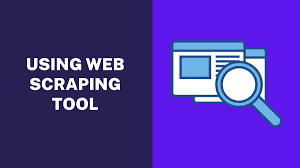In the world of web scraping, encountering Cloudflare blocks can be a frustrating obstacle. Cloudflare, a popular web security and performance company, employs various measures to protect websites from malicious traffic, including DDoS attacks and bot activity. However, these security measures can also inadvertently block legitimate web scraping activities. In this article, we will explore effective strategies for bypassing Cloudflare restrictions from the perspective of a web scraper.

Understanding Cloudflare Blocks:
Cloudflare utilizes several security mechanisms to detect and block suspicious traffic, including WAF (Web Application Firewall) and CAPTCHA challenges. While these measures are essential for protecting websites from malicious bots, they can also hinder legitimate web scraping activities by blocking access to targeted content.
Utilizing Dynamic IP Proxy Services:
One of the most effective strategies for bypassing Cloudflare blocks is to use dynamic IP proxy services like “穿云API”. These services provide a pool of dynamic IP addresses, including both residential and data center IPs, from various locations worldwide. By rotating through these IPs, web scrapers can effectively bypass Cloudflare restrictions and access the desired content without being detected.
Implementing User-Agent Rotation:
Cloudflare often blocks requests based on the User-Agent header sent by the web scraper. To bypass these blocks, web scrapers can rotate their User-Agent headers to mimic different web browsers and devices. This technique can help disguise scraping activities and evade detection by Cloudflare’s security measures.
Leveraging CAPTCHA Solving Services:
In some cases, Cloudflare may present CAPTCHA challenges to verify the legitimacy of incoming requests. To bypass these challenges, web scrapers can utilize CAPTCHA solving services, which automate the process of solving CAPTCHAs. By integrating these services into their scraping scripts, web scrapers can bypass Cloudflare’s CAPTCHA challenges and continue scraping without interruptions.
Avoiding Rate Limiting:
Cloudflare may impose rate limits on incoming requests to prevent abuse and ensure fair usage of resources. To bypass rate limiting, web scrapers can implement techniques such as request throttling and distributed scraping. By spreading requests across multiple IP addresses and reducing the frequency of requests, web scrapers can avoid triggering rate limits and continue scraping uninterrupted.
Conclusion:
Bypassing Cloudflare blocks requires a combination of technical expertise and strategic planning. By utilizing dynamic IP proxy services, rotating User-Agent headers, leveraging CAPTCHA solving services, and avoiding rate limiting, web scrapers can overcome Cloudflare restrictions and access the desired data. “穿云API” provides reliable proxy services to help web scrapers bypass Cloudflare blocks effectively and ensure the success of their scraping operations.